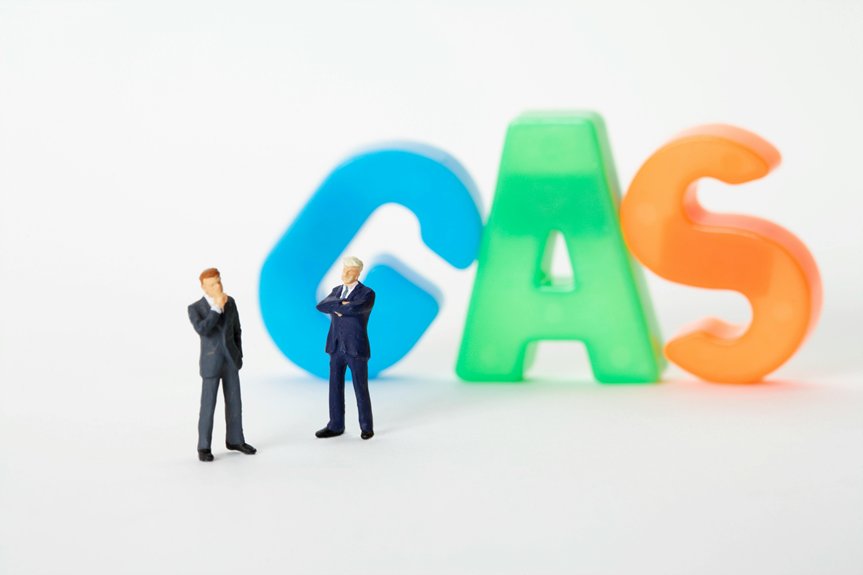Your tire pressure might be secretly draining your wallet at the pump. Underinflated tires create excessive rolling resistance, forcing your engine to burn more fuel with every mile. For each PSI below the recommended level, you’ll lose about 0.2% in fuel economy—and most drivers unknowingly run their tires 5-10 PSI too low. This inefficiency compounds over time, costing you hundreds in wasted fuel while accelerating tire wear. The solution is simpler than you might think.
The Science Behind Tire Pressure and Fuel Consumption
When examining the relationship between tire pressure and fuel efficiency, one must first understand the fundamental physics at play.
Underinflated tires create increased rolling resistance as more tire surface contacts the road. This phenomenon, called hysteresis, occurs when your tire’s rubber compound deforms against the pavement, converting kinetic energy into heat.
For every 1 PSI drop below recommended pressure, you’ll sacrifice approximately 0.2% in fuel economy. This occurs because your engine must work harder to overcome the additional friction, consuming more fuel in the process.
The effect is particularly pronounced at highway speeds, where rolling resistance accounts for about 15-25% of your vehicle’s energy consumption.
Proper inflation optimizes your tire’s contact patch, minimizing unnecessary friction while maintaining traction and handling characteristics.
How to Check Your Tire Pressure Correctly
Although maintaining proper tire pressure is essential for fuel efficiency, many drivers neglect this simple maintenance task due to uncertainty about the correct procedure.
To check your pressure accurately, you’ll need a quality digital gauge—analog models often lack precision.
Begin by locating your vehicle’s recommended PSI on the driver’s door jamb sticker or owner’s manual—not the maximum PSI printed on the tire sidewall. Check tires when cold, ideally after the vehicle has sat for at least three hours.
Remove the valve cap, press the gauge firmly onto the valve stem until the hissing stops, and note the reading. Compare this value to the manufacturer’s specification and add air accordingly.
For best fuel economy, repeat this process monthly and before long trips.
The Hidden Costs of Driving With Underinflated Tires
Despite appearing insignificant, underinflated tires can substantially drain your finances through multiple mechanisms that extend beyond reduced fuel efficiency.
When your tires lack proper inflation, they create excessive rolling resistance, forcing your engine to work harder and consume 3-10% more fuel.
Underinflated tires also wear prematurely and unevenly, particularly along their outer edges, reducing their lifespan by up to 25%.
You’ll face accelerated replacement costs while simultaneously increasing your risk of blowouts and accidents. The compromised handling affects your vehicle’s braking distance and cornering stability, potentially leading to costly collisions.
Moreover, you’ll experience increased maintenance expenses from added strain on your suspension components and wheel bearings, which deteriorate faster when compensating for improper tire contact with the road surface.
Optimal PSI Levels for Maximum Fuel Economy
Understanding the exact PSI (pounds per square inch) levels that enhance your vehicle’s fuel economy represents a direct solution to the financial drain caused by improper tire inflation.
Your manufacturer’s recommended PSI—typically between 32-35 PSI for passenger vehicles—serves as your primary reference point, found on the driver’s doorjamb sticker or owner’s manual.
Don’t confuse this figure with the maximum PSI listed on the tire sidewall, which indicates structural capacity rather than ideal driving conditions.
For maximum efficiency, maintain pressures 1-2 PSI above the manufacturer’s recommendation, but never exceed the sidewall maximum.
Cold-weather driving requires vigilance, as pressure drops approximately 1 PSI for every 10°F decrease.
Check your tire pressure monthly and before long trips using a digital gauge for precision.
Seasonal Tire Pressure Changes and Their Impact
As the seasons shift from winter’s frigid temperatures to summer’s scorching heat, your vehicle’s tire pressure fluctuates considerably, requiring proactive management to maintain ideal fuel efficiency.
For every 10°F temperature drop, tire pressure decreases by approximately 1-2 PSI. During winter months, you’ll need to check pressure more frequently, as underinflated tires can reduce fuel economy by up to 3%.
Conversely, summer heat expands air within tires, potentially causing overinflation that leads to reduced traction and uneven wear.
Establish a quarterly tire pressure maintenance schedule aligned with seasonal changes. Spring and fall require particular attention as temperature fluctuations are most dramatic.
Use a digital gauge for accuracy, checking pressure when tires are cold for precise readings that maximize your vehicle’s fuel efficiency year-round.
Smart Monitoring Systems for Maintaining Proper Inflation
While manual tire pressure checks remain essential for vehicle maintenance, modern Tire Pressure Monitoring Systems (TPMS) have revolutionized how drivers track and maintain ideal inflation levels.
These systems employ pressure sensors that continuously transmit real-time data to your vehicle’s onboard computer, alerting you when pressure drops below manufacturer specifications.
Premium TPMS models offer additional features including temperature compensation algorithms that account for thermal expansion effects on pressure readings.
You’ll find both direct and indirect monitoring systems available—direct systems measure actual pressure using dedicated sensors, while indirect systems infer pressure changes through wheel rotation speed differentials detected by your ABS sensors.
For best fuel efficiency, pair your TPMS with routine maintenance practices and consider upgrading to aftermarket systems with smartphone integration for thorough pressure management.
Conclusion
You’ll considerably improve your vehicle’s fuel economy by maintaining proper tire inflation. You’re losing 0.2% in efficiency for each PSI below recommended levels due to increased rolling resistance. Don’t overlook the compounding effects of seasonal temperature fluctuations on pressure levels. By implementing regular pressure checks with a calibrated gauge, you’re not only optimizing fuel consumption but also extending tire life and reducing long-term ownership costs.


